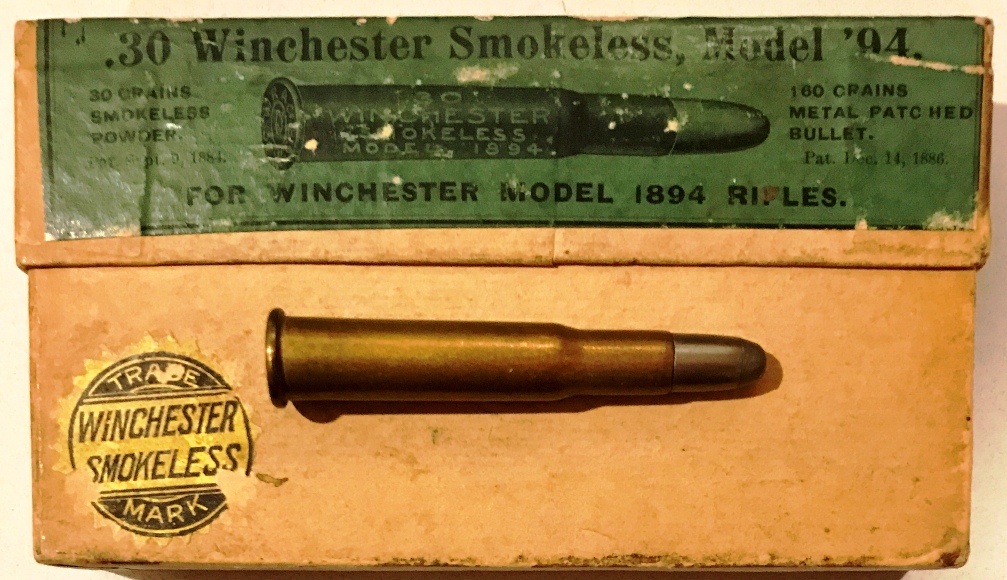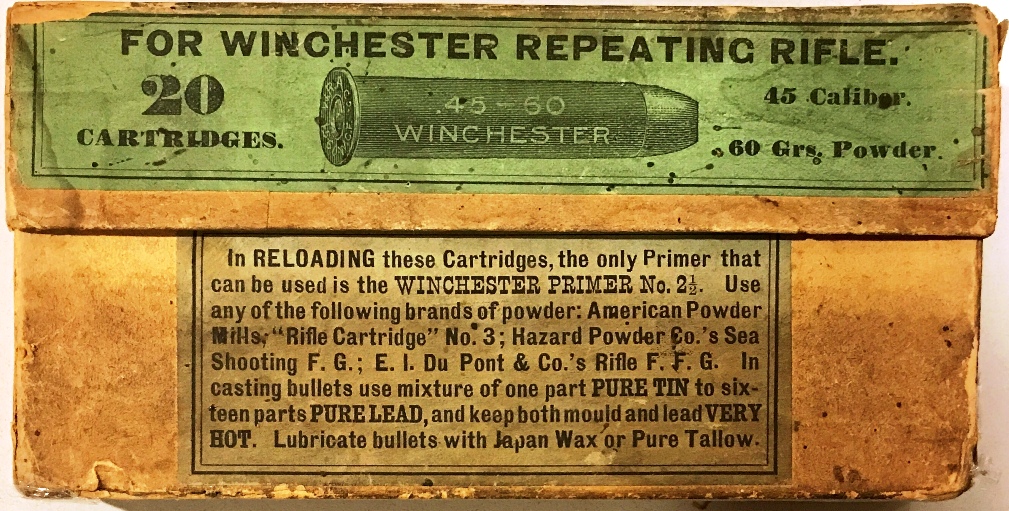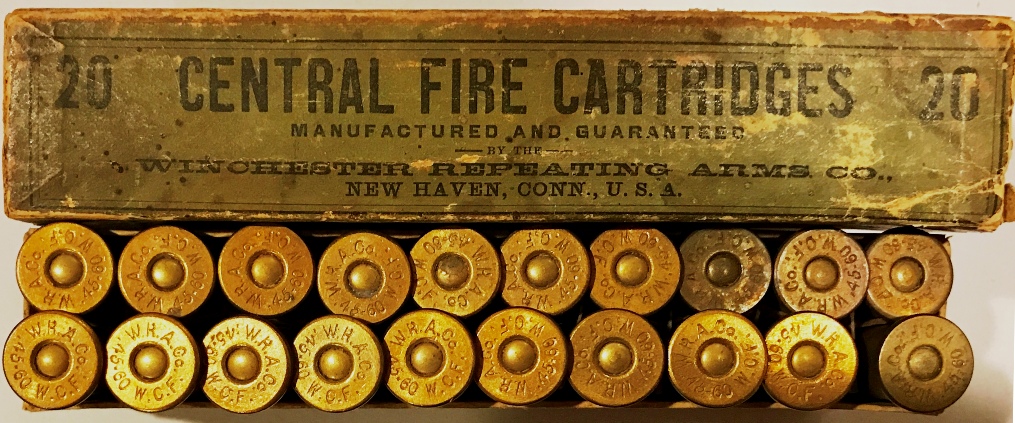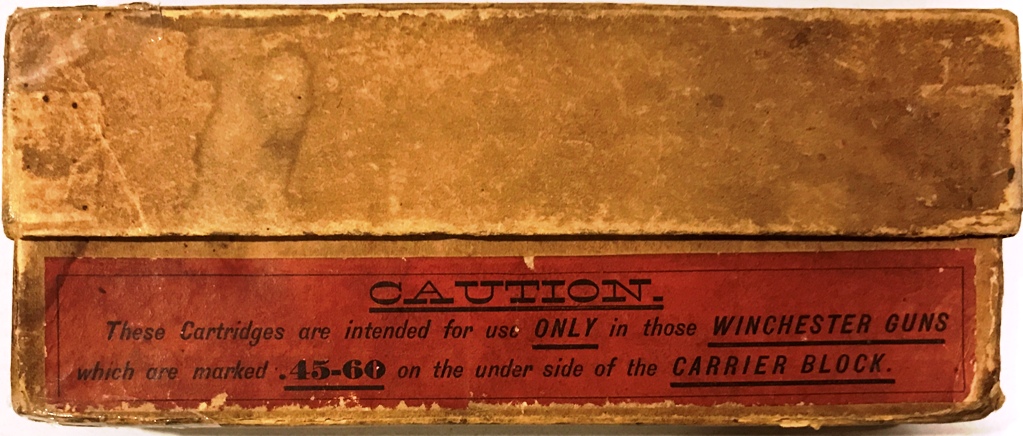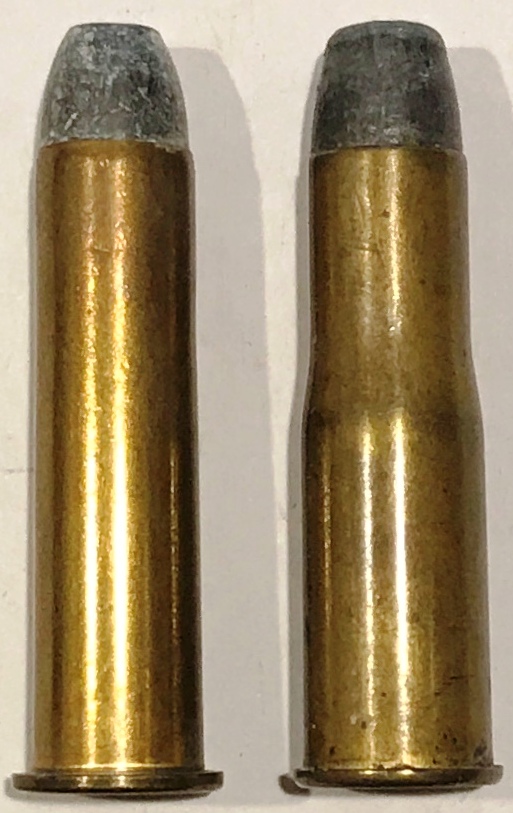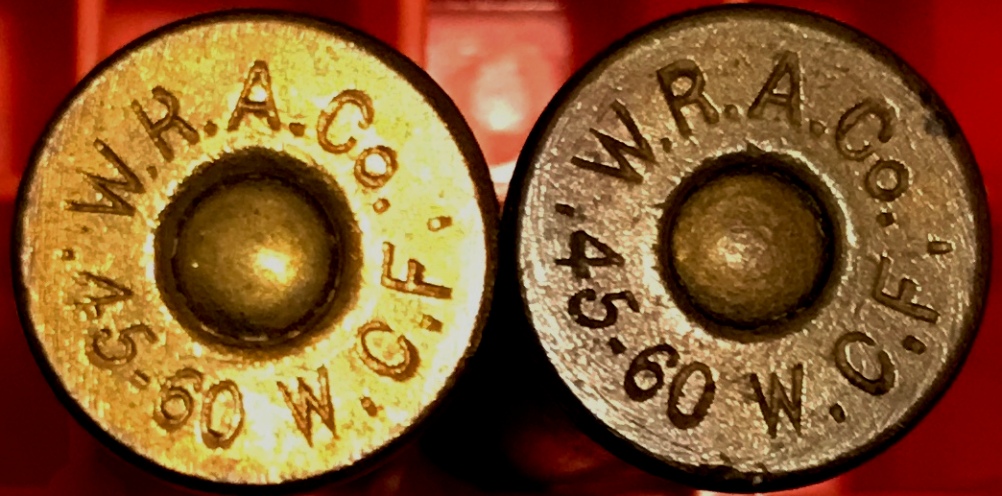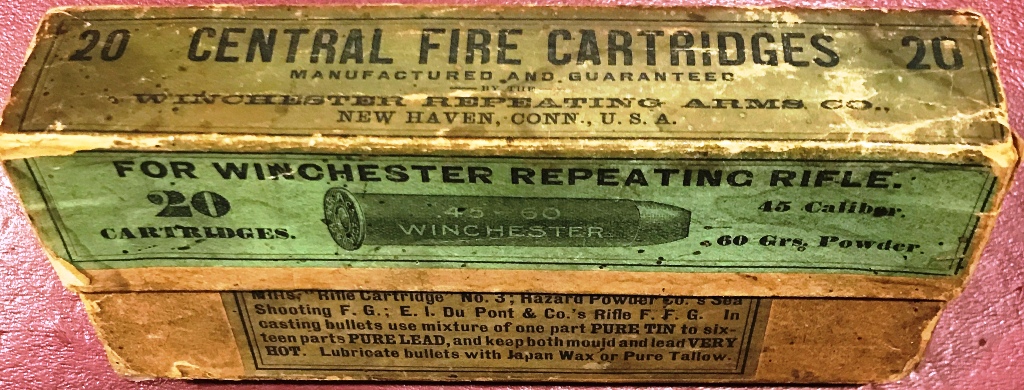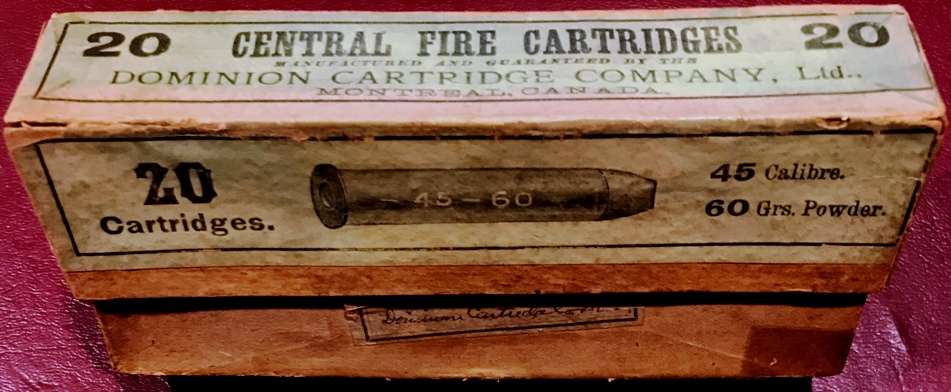|
THE CARTRIDGE COLLECTOR'S EXCHANGE |
|
|
|
Home of the Old Ammo Guy's Virtual
Cartridge Trading Table
Picture Page January 2019
Please note: Unless otherwise indicated, the pictures on this web site are my property, and should not be used by anyone without crediting the source. An early Winchester .45-60 W.C.F. box..... The .45-60 Winchester Center Fire box shown below was in a small group of Winchester cartridge boxes from an the auction last November that included the .30 W.C.F. box on my December 2018 picture page. The .45-60 W.C.F cartridge was introduced by Winchester in 1879 as a second offering, in addition to the .45-75 W.C.F., for their Model 1876 rifle, and was first listed in their 1880 Winchester catalog. The Model 1876 rifle was Winchester's first 'long range' rifle, and made it's first public appearance at the 1876 Centennial Exposition in Philadelphia, and aptly referred to by Winchester as their 'Centennial Model'.
This cartridge was introduced prior to Winchester's use of headstamps on it's commercial ammunition, so for the first 5 or 6 years the 45-60 W.C.F. cartridges were unheadstamped, and the boxes for these earliest cartridges included no headstamp on the cartridge illustrated on the label. As Winchester completed and began using the dies required to apply headstamps to it's line of cartridges, they also revised their label illustrations to reflect those headstamps. Just when a particular cartridge began being headstamped and how soon afterwards the label illustrations reflected those headstamps cannot be determined with any accuracy. Suffice it to say that the changes for the fastest selling, more popular cartridges would have been completed first. .
. This particular box contains headstamped cartridges, and the cartridge illustration on the label also bears the headstamp, indicating the box was produced after 1885 or so. Just when it was made can't be positively determined, other than to say it was definitely made prior to 1898, when 'CENTRAL FIRE CARTRIDGES' on the top label became 'CENTER FIRE CARTRIDGES'. However, based on a confusing mix of characteristics, including the fonts used, and the wording and positioning of the various components of the labeling, I would guesstimate that this box was made in the late 1880s.
. This red label on the back of the box cautions against inadvertently trying to fire a .45-60 W.C.F. cartridge in a Model 1876 rifle not chambered for it. Prior to the introduction of the .45-60 cartridge, Winchester seldom marked the caliber anywhere on a Model 1876 rifle, since there was only the one cartridge (.45-75) that could be used in it. With the advent of the .45-60 cartridge, they began marking the caliber on the bottom of the brass carrier block. However, few of the 5400 rifles that had been made up to that point had a caliber marking; hence the caution to look for the .45-60 on the carrier block before loading the rifle with .45-60 cartridges.
If someone failed to heed the caution, the results could be devastating. A look at the dimensions of the two cartridges will reveal why.
.45-60 W.C.F.:
bullet at case mouth - .441", the diameter of the portion inside the case is .454" neck just below bullet - .475" neck 1/2" below bullet - .476" head - .503" rim - .623" case length - 1.885"
.45-75 W.C.F.:
bullet at case mouth - .446", the diameter of the portion inside the case is .454" neck just below bullet - .476" neck 1/2" below bullet - .477" head - .558" rim - .618" case length - 1.880"
The .45-60 is on the left in this photo. Comparing the measurements of the bullets, necks and case lengths of the two cartridges, it becomes apparent that the .45-60 cartridge would load and be held properly positioned for firing in the .45-75 chamber by the front portion of its case. The additional space in the chamber that was intended for the shoulder of the .45-75 cartridge would not be filled by the straight tapered case of the .45-60. Upon discharge, the case would tend to expand outward to fill the excess space in the .45-75 chamber; there is a slight possibility that this could split the rifle barrel in the process, but more than likely it would allow some of the initial hot ignition gases to momentarily blow by the smaller head and rim of the .45-60 case, pass around the firing pin and through the bolt, and into the face of the shooter.
.
Inspection of the headstamps of the cartridges in the box reveals that they are not all original to the box. Note the missing portion of the top of the 'R' on the cartridge on the left; this is present on sixteen of the twenty cartridges in the box and resulted from a damaged headstamp die. The remaining four cartridges have the period-correct headstamp but don't have that defect in the 'R'. These four cartridges are also more tarnished than the others and I suspect were added to make this a full box for the purpose of adding value to what had been a less desirable partially full box.
This is something a buyer needs to look out for, especially when considering the purchase of a really expensive box. Typically, collectible boxes are shrink wrapped. A reluctance on the part of the seller to remove the clear shrink wrap is understandable if the box itself is still sealed, in which case there is no question about the originality of the contents. But with a box that is no longer sealed, the seller should expect a serious collector to want to inspect the contents, especially if it is being sold as a full box; such boxes probably shouldn't be shrink wrapped in the first place.
This box held a little surprise that has presented me with a bit of a mystery. Hand written across the bottom in black ink is '3 1/2 cts apiece 3 for 10 cts'. Pricing full boxes by the individual cartridge must not have been too uncommon, as it is not that rare to encounter a box with a 'per cartridge' or 'each' price written on it. What's odd about this box is the half cent pricing. The half cent was last minted in the United States in 1857, and continued to be used for only a few years afterwards. Soon the Civil War brought with it an end to the availability of the half cent coin, so it doesn't seem likely that this pricing would have been applied in this country to a box of cartridges that was produced more than 20 years afterward.. Perhaps this box was in another country when it was being pieced out. I am leaving any further speculation with that.
.
While sorting through my box collection, I found a Dominion Ammunition Company .45-60 box that looks a lot like the Winchester box. Below I've added a photo of the Winchester box positioned to show the top and front labels, and below it the Dominion box in the same position. Although a bit planer than the Winchester box, The Dominion box is certainly quite similar in layout. You'd think they would have at least gone with a different color for the labels.
. . Sources: One Hundred Years of Winchester Cartridge Boxes 1856 - 1956 by Ray Giles and Dan Shuey 1856-1956, 2006, Schiffler Publishing, Ltd, 4880 Lower Valley Road, Atglen, PA. 19310 The Winchester Book, George Madis, Taylor Publishing Company, Dallas, Texas, 1977
.
|
